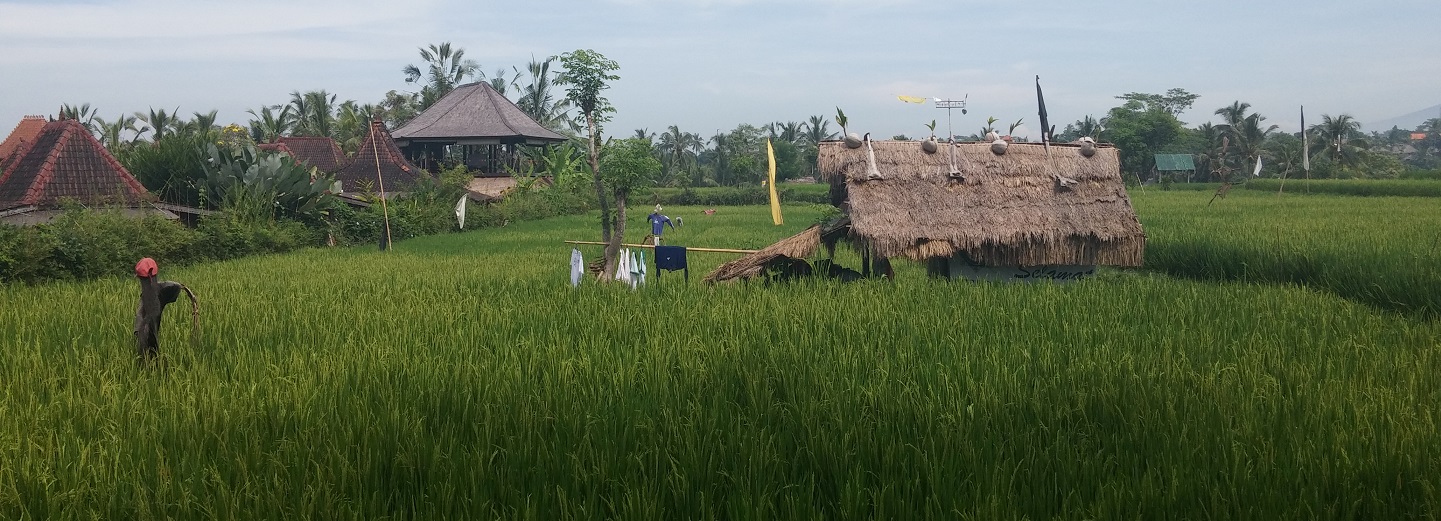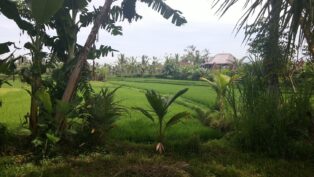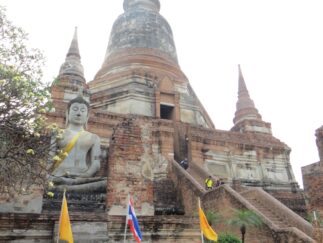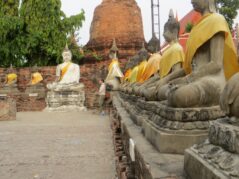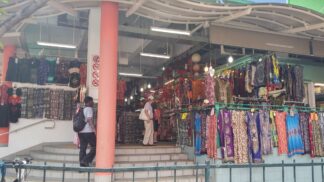I love that nearly every place we want to explore in Asia is within a 2-3 hour flight from our home in Singapore. Gene and I had a great get-away to Ubud (pronounced Ah-bood), on the island of Bali, Indonesia in late April. It is one of eight major islands of the 13,000-17,000+ islands of Indonesia (see photos below the text).
Since we are not beach bunnies (not that into sun burning, or scads of kids and surfer dudes), we headed north to Ubud, 1.5 hours inland. It has a reputation for impressive art and artists, spas and retreats (apparently the Julia Roberts movie, Eat, Pray, Love took place there), ancient temples, traditional dancing, and affordable shopping. Surrounding Ubud are swaying rice fields, lush forests, deep ravines, thatched houses and huts, numerous temples, and the Mount Batur Volcano which is supposed to have spectacular sunrises.
Although we were warned about motorbikes, we were still surprised by their sheer numbers and how they were used. A common sight is an entire family, up to 5 people, riding together. And large quantities of goods are transported this way, too, an entire vendor stall of products are tied and balanced on these bikes.
Ubud is an interesting random mix of urban and rural sites everywhere you go. As we walked down the busy shopping street of Jl Raya with it many ancient temples along the way, some of which are now homes and art studios, there is an expanse of forest which plunges deep with homes and shops in the canopies and shacks below.
Indonesians have a reputation of being friendly and they really are. We had many warm conversations with a variety of people: artists, shop owners, and the hotel manager who were happy to share information about life in Bali and answer our questions. This was the first place we traveled where we didn’t see any Muslims although we knew that Islam was the predominant religion of Indonesia. The Hotel Manager, who is from Jakarta, explained that Bali is the only island in all of Indonesia with a high Hindu population, and the multitude of other inhabited Indonesian islands have high Muslim populations.
I have to say that Indonesian currency tested my math skills. We felt pretty rich temporarily when we took out 1 million Rupiah on our first day, but it only amounted to $80 USD. We were having trouble knowing whether we were giving rupiah worth $1, $10 or $100 and often gave too little because of the enormous bills. It took a lot of effort to spend $30 a day. The food was wonderful, fresh, and creative. We had a fantastic barramundi, a thick white fish with aromatic herbs that I love to cook with.




























